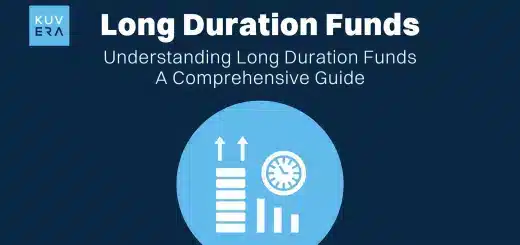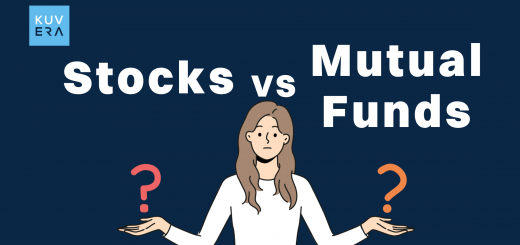Are you looking for top mutual funds for SIP in the index funds category? Then, you have come to the right place. In India, index funds have become increasingly popular due to their simplicity, low cost and broad market exposure. They aim to replicate the performance of a specific index rather than trying to outperform it.
Them working for you, while you Netflix and chill.#Memes pic.twitter.com/Sm0ZVWbQHV
— Kuvera (@Kuvera_In) June 27, 2024
Each type of index fund comes with its own risk and return characteristics so selecting the right one will depend on an individual’s investment objectives, risk appetite and investment horizon. Here’s a brief overview of the types of index funds available:
Start investing in Index Funds.
1. Equity Index Funds
These funds track major stock market indices like the Nifty 50 or Sensex. They are a good choice for investors looking to gain exposure to the broader equity market.
Market capitalisation index funds are a type of equity index fund that tracks indices based on the market capitalization of the companies included. Market cap is the total value of a company’s outstanding shares of stock and is calculated by multiplying the share price by the number of outstanding shares.
Types of Market Cap Index Funds
Now that you know what equity index funds are, let us know the various types of equity index funds.
1. Large-Cap Index Funds
These track indices that focus on large-cap companies, which are typically well-established, financially stable, and have a high market value. Example: Funds tracking indices like the Nifty 50 or Sensex, which include large, blue-chip companies in India.
2. Mid-Cap Index Funds
These track indices include medium-sized companies with moderate market capitalizations. Example: Funds tracking indices like the Nifty Midcap 100 or BSE Midcap Index.
3. Small-Cap Index Funds
These track indices comprise smaller companies with lower market capitalizations. Example: Funds tracking the Nifty Smallcap 100 or BSE Smallcap Index.
4. Mega-Cap Index Funds
These track indices focus on the very largest companies in the market, often including those with market caps in the top tier. For example indices like the Nifty 100 or S&P 500 (in the U.S.) for the largest global companies.
5. Broad-Market Index Funds
These track indices that include a broad range of companies across various market caps, providing comprehensive market exposure like funds tracking indices like the Nifty 500 or the BSE 500.
Risks Associated with Equity Index Funds
The equity index funds are subject to the below risks:
1. Market Risk: Subject to fluctuations in the stock market which can lead to significant volatility.
2. Economic Cycles: Performance can be influenced by economic cycles and market sentiment. Sentiment can drive market trends with investor behaviour sometimes leading to overvaluation or undervaluation of stocks.
Performance of Top 5 Equity Funds Based on AUM
| Fund name | AUM (Cr.) | 1-Year Return | 3-Year Return | 5-Year Return |
| HDFC Index Fund- Nifty 50 Plan | 7,621.28 | 27.36% | 17.53% | 18.46% |
| UTI Nifty 50 Index Fund | 19,356.78 | 27.26% | 17.44% | 18.44% |
| ICICI Prudential Nifty 50 Index Fund | 9,800.42 | 26.21% | 16.02% | 16.02% |
| SBI Nifty Index Fund | 7,940.99 | 25.90% | 15.86% | 15.73% |
| HDFC Index Fund – S&P BSE Sensex Plan | 7,646.71 | 24.02% | 16.93% | 17.86% |
(Source: www.forbesindia.com and respective sites of each fund house mentioned as of 31st July 2024)
(Note: The highlighted values represent the funds with highest returns in the given period)
Check the constituents of Nifty 50 index funds.
2. Debt Index Funds
These funds track fixed-income indices such as those representing government or corporate bonds. They’re designed for investors seeking stable returns with lower risk compared to equities.
Risks Associated with Debt Index Funds
Even though Debt Index Funds possess lower risk than Equity Index Funds, yet it is subject to the following risks:
1. Interest Rate Risk: Bond prices tend to fall when interest rates rise which can negatively impact fund performance.
2. Credit Risk: Potential default risk of the underlying bonds, especially if investing in lower-rated securities.
3. Inflation Risk: Rising inflation can erode the real returns of fixed-income investments.
Performance of Top 5 Debt Index Funds
| Fund name | AUM (Cr.) | 1 Year Return |
| HDFC NIFTY G-Sec Jun 2036 Index Fund | 819 | 9.80% |
| Nippon India Nifty G-Sec Jun 2036 Maturity Index Fund | 659 | 9.78% |
| SBI CRISIL IBX Gilt Index – June 2036 Fund | 2,484 | 9.69% |
| Kotak Medium Term Fund | 1,663 | 9.68% |
| Edelweiss CRISIL IBX 50:50 Gilt Plus SDL April 2037 Index Fund | 983 | 9.65% |
(Source: www.etmoney.com and respective sites of each fund house mentioned)
3. Sectoral/Thematic Index Funds
These focus on specific sectors or themes like technology or pharmaceuticals. They track indices that represent these sectors providing targeted exposure to particular areas of the economy.
Risks Associated with Sectoral Index Funds
Below are the risks associated with sectoral or thematic index funds:
1. Sector-Specific Risk: Exposure to a single sector means the fund’s performance heavily depends on that sector’s health and performance.
2. Lack of Diversification: Concentrated investments in a particular sector can lead to higher volatility and risk.
3. Economic and Regulatory Risks: Changes in regulations or economic conditions affecting the sector can significantly impact returns.
Performance of Top 5 Thematic Mutual Funds
| Fund Name | AUM (Cr.) | 1 Year return | 3 Year return | 5 Year return |
| Quant ESG Equity Fund | 315 | 50.25% | 32.35% | – |
| Nippon India Consumption Fund | 1,411.00 | 41.19% | 26.58% | 28.00% |
| ICICI Prudential Bharat Consumption Fund | 2,613.00 | 39.58% | 26.50% | 23.56% |
| Mirae Asset Great Consumer Fund | 4,069.00 | 41.25% | 25.32% | 25.66% |
| Tata India Consumer Fund | 2,247.00 | 42.50% | 23.65% | 24.32% |
(Source: Respective sites of each fund house mentioned)
4. International Index Funds
These funds invest in indices from foreign markets allowing Indian investors to diversify their portfolio internationally. They might track global indices or those specific to a particular country or region.
Risks Associated with International Index Funds
The International Index Funds are subject to the risks given below:
1. Currency Risk: Fluctuations in foreign exchange rates can affect returns when converting international investments back to INR.
2. Geopolitical Risk: Political instability or economic issues in other countries can impact performance.
3. Market Risk: Different international markets may have varied levels of volatility and economic risk.
Performance of a Few International Index Funds
| Fund Name | AUM (Cr.) | 1 Year return | 3 Year return | 5 Year return |
| ICICI Prudential US Bluechip Equity Fund | 3,170.77 | 12.06% | 9.07% | 16.26% |
| Franklin India Feeder – Franklin U.S. Opportunities Fund | 3,433.00 | 27.93% | 4.39% | 15.89% |
| ICICI Prudential Global Stable Equity Fund | 119.89 | 6.95% | 6.61% | 10.10% |
(Source: www.moneycontrol.com)
5. Balanced Index Funds
These funds invest in both equity and debt indices providing a balanced approach to risk and return. They offer diversification within a single fund by holding a mix of assets.
Risks Associated with Balanced Index Funds
Now that you know what balanced Index Funds are, here are the risk factors that are associated with such funds:
1. Asset Class Risk: Underperformance in one asset class can impact overall returns.
2. Interest Rate and Market Risk: Combining equities and debt exposes investors to both market volatility and interest rate changes.
3. Rebalancing Risk: Regular rebalancing to maintain the target asset allocation may lead to transaction costs or affect performance during certain market conditions.
6. Strategy Index Funds
These funds track indices based on specific investment strategies or methodologies rather than just market capitalisation. They are designed to replicate the performance of an index that follows a particular investment approach often targeting specific factors or styles. They offer exposure to specific investment styles or factors, which can align with particular investment goals or preferences. Different strategies come with varying levels of risk and potential returns. For instance, growth funds might offer higher returns but with higher volatility whereas dividend funds may provide steady income with lower risk.
You can invest in all these index fund India types.
Overall, index funds are valued for their diversification, lower costs and alignment with different investment objectives.
Sign up now and add ease to your investing index funds investing experience.
Wrapping Up
While looking for top mutual funds for SIP in index funds, you need to first select the type of index funds and then look at top mutual funds for SIP.
Interested in how we think about the markets?
Read more: Zen And The Art Of Investing
Watch here: Investing In Passive Funds
Start investing through a platform that brings goal planning and investing to your fingertips. Visit kuvera.in to discover Direct Plans of Mutual Funds and Fixed Deposits and start investing today.
AREVUK Advisory Services Pvt Ltd | SEBI Registration No. INA200005166
DISCLAIMER: Mutual Fund investments are subject to market risks. Read all scheme related documents carefully. Registration granted by SEBI, membership of BASL (in case of IAs) and certification from NISM in no way guarantee performance of the intermediary or provide any assurance of returns to investors. Investments in securities market are subject to market risks. Read all the related documents carefully before investing. The securities quoted are for illustration only and are not recommendatory.












